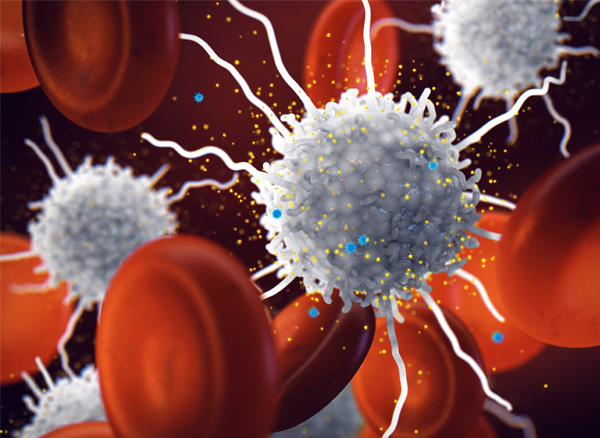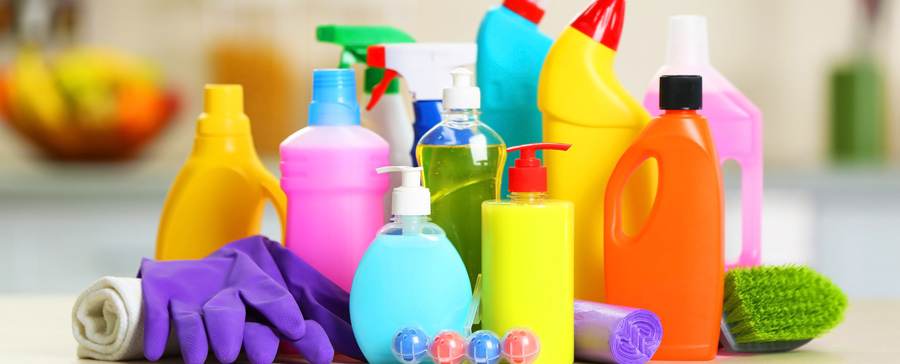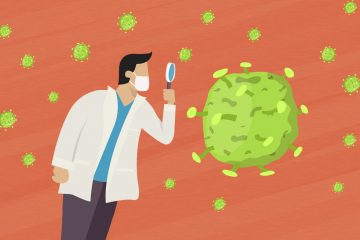What’s the Connection Between Mold Illness and MCAS? Chronic mold exposure can lead to ongoing inflammation and a faulty immune response
 M old is a common problem in many households, yet it’s often overlooked. It’s more than a minor annoyance or cosmetic issue. Mold can have a serious impact on your health. It may disrupt your immune system, create chronic inflammation, and cause chronic symptoms, including allergies, respiratory symptoms, fatigue, brain fog, migraines, digestive complaints, and other chronic symptoms.
M old is a common problem in many households, yet it’s often overlooked. It’s more than a minor annoyance or cosmetic issue. Mold can have a serious impact on your health. It may disrupt your immune system, create chronic inflammation, and cause chronic symptoms, including allergies, respiratory symptoms, fatigue, brain fog, migraines, digestive complaints, and other chronic symptoms.
Chronic mold exposure may also result in overactive mast cells. The combination of mold toxicity and mast cell activation syndrome (MCAS) can wreak havoc on your entire body and lead to chronic, and sometimes debilitating, health issues. It doesn’t have to be this way.
Mold and Mast Cell Activation Syndrome
Mast cells are there to protect your body from harm. When they are triggered by toxins or pathogens, they will alert your immune system about the danger, which will lead to the release of various inflammatory mediators, such as histamine. This is what happens when mold mycotoxins enter your body.
 Your mast cells will get triggered, which will lead to the release of various chemicals that, for some, may include histamine, leukotrienes, or other mediators and cytokines to protect you from harm. Under normal circumstances, this is a good thing. Your mast cells are doing their job trying to protect you from danger.
Your mast cells will get triggered, which will lead to the release of various chemicals that, for some, may include histamine, leukotrienes, or other mediators and cytokines to protect you from harm. Under normal circumstances, this is a good thing. Your mast cells are doing their job trying to protect you from danger.
However, if you are experiencing chronic mold exposure from living in a home with mold in your bathroom or behind your wallpapers, working in a mold-infested building, or being exposed to mold on a daily basis for any other reason, it can turn into a serious issue. Chronic mold exposure means chronic mycotoxin exposure, causing your immune system to be on high alert at all times to protect you from ongoing danger.
This can lead to ongoing inflammation and a faulty immune response with ongoing mast cell activation and overproduction of histamine and/or other chemicals. According to a 2018 study published in the Journal of Regulators and Homeostatic Agents, mold may trigger a mast cell-cytokine immune response aggravating asthma, respiratory issues, headaches, brain fog, nausea, and fatigue.
For some patients, when there is ongoing mast cell activation, it may make it increasingly difficult for your body to take care of excess histamine. As a result, you may develop histamine intolerance and related symptoms. Symptoms of MCAS and histamine intolerance may both mimic symptoms of mold illness.
Cell Danger Response, Mold, and Mast Cells
 In addition to increased mast cell activation, your body may also enter something called the Cell Danger Response (CDR) to protect you from mold toxicity. The role of the CDR is to guard your individual cells against any cellular threat or harm.
In addition to increased mast cell activation, your body may also enter something called the Cell Danger Response (CDR) to protect you from mold toxicity. The role of the CDR is to guard your individual cells against any cellular threat or harm.
The CRD is a major shift in your physiology. It changes your body from cellular energy production and cellular metabolism to cellular defense. This means that the CDR will move your body from a fight-or-flight to a freeze mode, shutting various important pathways down in your body to stop the mold from spreading and harming you.
While the CDR is a very important part of your body’s cycle of fighting and protecting you from harm, a chronic CDR state can turn into a problem. Chronic mold exposure may overwhelm your body and lead to ongoing CDR, causing a variety of chronic health issues. Chronic CDR may also further increase mast cell activation, histamine intolerance, and chronic symptoms and health issues. As you see, chronic mold toxicity, mycotoxin illness, chronic inflammation, CDR, and mast cell activation, may result in a vicious cycle unless you address all underlying issues.
If you are experiencing symptoms of mold toxicity, it’s critical that you look for signs of mold in your home. Even if you don’t have any symptoms of mold illness, I recommend checking your home regularly for mold, and water-damaged areas to prevent future health issues.
- General musty smell in your home
- Rotten or musty odor coming from the floor or the walls
- Black, grey, pink spots in your bathroom between the tiles, in the toilet or shower or on the wall
- Spots, spores, fuzz, or other signs on your furniture, under your rugs or carpeting, or on your clothes
- Bubbling paint
- Discoloration on ceiling
- Peeling or warped wallpaper
- Spotted walls
- Black spots on your AC
- Musty smell coming from your AC
- Past or present water leakage issues or water damage (e.g., flooded sink or toilet, leaky water tank, moisture in your water heater closet, or flooding in the basement)
You can buy some home testing kits online to test for mold, but you might want to consider working with a mold remediation specialist to check your home for mold.
While living in a mold-free home would be ideal, it is very difficult to rid your environment completely of all mold and mycotoxins. Mold issues can pop up from leakage, water damage issues, and other moisture problems. I recommend working with a professional mold remediation specialist to help find, identify, and professionally remove mold from your home. What’s even more important is to reduce the risk of mold exposure and mold-related issues.
Addressing any underlying issues that may drive mold can seriously reduce mold growth and mold exposure.
- Check for mold issues regularly and use cleaning products designed for mold.
- Remove old carpeting, rugs, wallpaper, or paint that has had water damage
- Clean or dispose of any moldy items, including shower curtains or clothing.
- Fix moisture leaks and water damage issues.
- Make sure to wipe down the tiles after showering or taking a bath.
- Keep indoor humidity ideally between 30 and 50 percent.
- Use a high-quality indoor air filtration system.
- Make sure your home is well-ventilated.
- Try to hang your wet clothes outside instead of indoors or use your drier.
- Keep the detergent compartment of your washing machine open.
- Keep mold off your indoor plants, check them regularly for mold issues.
- Check your food for mold and avoid eating moldy food.
- Clean and repair the roof gutters of your home.
- Direct any rain or melted snow or ice away from your house.
- Check for signs of mold growth regularly and address any mold immediately.
- If uncertain, use a mold home test kit or call a specialist for a mold check.
Unfortunately, mold exposure at work is common, but it’s the most difficult to control. You can be unknowingly exposed to mold at work. You should be on the lookout for mold and consider finding solutions to deal with it.
If possible, use a small high-quality air filtration system at your office or workspace. If there are ongoing mold issues or you are experiencing increased mold-related symptoms at work, you may need to consider looking for a new job or a new office to work out of.
If you have been exposed to mold or are experiencing symptoms of mold toxicity or MCAS, it is important to get tested for mold illness. I recommend working with an integrative medicine practitioner who is well-versed in both mold and mast cell activation syndrome.
 Detoxify your body from mold and other toxins. Support hydration and detoxification through sweating and urine by drinking enough water throughout the day, at least 10 glasses. For those that can tolerate it, even a low level of exercise can help support the detoxification process, but if you have symptoms of post-exertional malaise, it is best to consult your medical provider about what is right for you. Some patients find infrared sauna helpful in encouraging detoxification through sweating but for those who are heat intolerant, it can be a trigger for MCAS, so I would recommend avoiding it.
Detoxify your body from mold and other toxins. Support hydration and detoxification through sweating and urine by drinking enough water throughout the day, at least 10 glasses. For those that can tolerate it, even a low level of exercise can help support the detoxification process, but if you have symptoms of post-exertional malaise, it is best to consult your medical provider about what is right for you. Some patients find infrared sauna helpful in encouraging detoxification through sweating but for those who are heat intolerant, it can be a trigger for MCAS, so I would recommend avoiding it.
There are some supplements that we use to support mold detox, including glutathione, which also supports your mitochondrial health and recovery from mold exposure. The use of toxin binders can support the elimination of toxins. Other supplements can support the liver for detoxification and help you deal with fungal and yeast overgrowth.
I recommend following the “Dempsey Diet.” This is an anti-inflammatory, nutrient-dense food plan. Remove inflammatory foods, including refined sugar, refined oils, additives, artificial ingredients, and highly processed foods. When possible, follow a nutrient-dense diet focusing on good quality, grass-fed or pastured meat and poultry, and low-carbohydrate vegetables and greens. Choose organic options whenever available.

In general, avoiding sugar and limiting fruit and starchy carbohydrates is helpful for MCAS and other chronic conditions I treat. Some patients find that lowering the intake of histamine in the diet is helpful. However, it doesn’t work for everyone and, in some cases, can make things worse. To further support your gut and microbiome health, I would consider taking a high-quality probiotic supplement.
These are general dietary recommendations. Depending on your personal health issues, allergies, sensitivities, and preferences, you may need some modifications. My best recommendation is to an integrative medicine practitioner for personalized recommendations.
Mold is not the only trigger of mast cell activation. Other common triggers include allergens, toxins, chemicals, heavy metals, viruses, bacteria, parasites, and stress. Moreover, when we talk about mold as a potential mast cell trigger, we are not only talking about mold in our environment but also internal mold and fungal infections, such as Candida overgrowth. These internal fungi can also cause mycotoxin release and mycotoxin illness. Treating the underlying infection or fungal overgrowth can reduce your exposure to these mast cell triggers and may help to reduce your chronic symptoms.

Avoid chemicals, heavy metals, and other environmental toxins. Instead of using chemical-filled conventional cleaning, hygiene, body, and beauty products, choose organic, natural, and homemade alternatives. Reduce the use of plastics, especially BPA. There are great alternatives for plastic made from glass, wood, bamboo, organic cotton, and other natural materials based on your needs.
Use a high-quality indoor air-filtration system for better indoor air quality. Drink purified, filtered water to avoid toxins from city tap water or well water. Choose organic food whenever possible. Reduce stress.
Next Steps
If you are experiencing symptoms of mold illness, MCAS, or other chronic health issues, working with a functional or integrative medicine practitioner is one of the best ways to find the underlying causes of your symptoms and find the right treatment plan.
Editor’s note: Any medical information included is based on a personal experience. For questions or concerns regarding health, please consult a doctor or medical professional.





























